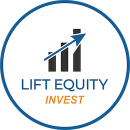
Different Types of Real Estate
Flipping Properties
Flipping properties is considered one of the most popular and well-known real estate strategies resulting in big ticket money generation. Just go on TV, most of the well-known real estate shows are about flipping houses.
The main purpose behind this strategy is to take outdated, distressed, or abandoned houses nobody wants (also known as fixer-uppers) and renovate them so they become more desirable and will sell for much more than all your costs, resulting in a healthy profit. This is doable because investors that flip properties take advantage of the forced appreciation as the key source of their business model.
Many people do not want to do this kind of work because it is time consuming, complicated, stressful, and requires large amounts of money reserves to shield you from bankruptcy in case a project fails or goes over budget.
Wholesaling Real Estate
Wholesaling is another real estate strategy where a wholesaler obtains a contract with its seller and then sells that contract to an investor. It is considered fast money because you can make a solid amount of money in a relatively short period of time.
In order to sell before closing, you must have what is called an “assignability clause” which will give you the authority to the property or assign the property to another buyer. You do not have to own the property to do this because you are only selling the rights to the contract, not the title to the property.
How this works, for the seller, you are targeting people that might be interested in selling their property quickly and for far less than its market value simply due to the fact of their distressed situation. You take their property under contract and set a future closing date.
Then, for the end-buyer, you can find a list of investors who would be interested in buying undervalued real estate online or at real estate investor clubs. Pitching the contract as an off-market deal.
Once you find an end-buyer on the deal, you can then assign the contract to the end-buyer for a fee. This will result in all involved parties getting what they want at time of closing.
After the close, you may walk away with a fee anywhere between $5K or $40K depending on the deal.
This may sound simple but there is a lot of competition for deals, a lot of marketing/research, and requires a lot of negotiation on your part.
Rental Properties
Rental properties are an excellent way to make passive income while you sleep; however, the main sticking point to this is that this largely depends on economics of scale. Yes, they are a great way to earn passive income, but only if you can own multiple properties to outsource your responsibilities of directly managing the properties.
The basic concept is to have a property that can generate more monthly income than it costs in mortgage payments, insurance, property taxes, and repairs and maintenance. Taking advantage of cashflow, yearly tax depreciation deductions, and yearly property value appreciation in the market.
Cash flow in simple terms, is the movement of money in and out of a business. Typically speaking, real estate values go up, but every market is different. It is very important to know how certain factors affect the real estate market and the right areas to invest in to maximize your performance. A great rental property not only gets positive cash flow but appreciates over time.
So, there is really only one way to take advantage of all the above passive benefits of rental properties while doing it at an affordable economic of scale, and that is multifamily syndication!
Multifamily Syndication
Real estate syndication is defined as a partnership between a group of investors who pool their resources into a single investment. This strategy will have general partners (known as GPs) and limited partners (known as LPs). The general partners are responsible for finding the deals, arranging the paperwork, hiring the proper management, collecting down payment from all the limited partners, and distributing the monthly or quarterly distributions to the limited partners in exchange for a little “sweat equity” in the deal.
Limited partners are not involved in the general management of the property, they just invest their cash in real estate deals and carry no liability other than their initial investment. General partners like to seek out stable, income-producing assets to ensure the limited partners can earn money consistently. The limited partners income depends on the performance of the property as well as the capital they invest. The opportunity to invest in real estate that would in other cases be reserved for the extremely wealthy to put a down payment is a great investment to people who lack the money and experience to do it on their own.



